250 years ago a brutal murder took place on a quiet lane near the village of Grassington in the Yorkshire Dales. Many years may have passed since the killing took place, but the crime still linger in the folklore of the area.
The murderer's name was Tom Lee, - a lead miner and inn keeper of the Blue Anchor in Grassington. In 1768 Lee was put on trial and hanged for the murder of Richard Petty, the local doctor. One version of the story leading up to the murder relates how Tom Lee was shot while trying to commit a robbery. His injuries were so serious that he had no choice but to call the doctor, who soon realised what Lee had been up to. Lee feared that doctor Petty would turn him in, and so to keep him quiet he decided to kill him. The other version of the story has both men attending a cock fight in Kettlewell, where the doctor won a large sum of money betting on the fights. The two men rode back to Grassington, stopping at the inns along the way, until, as they approached Grassington, Tom Lee killed the doctor and took his money. There is probably some truth in both versions.
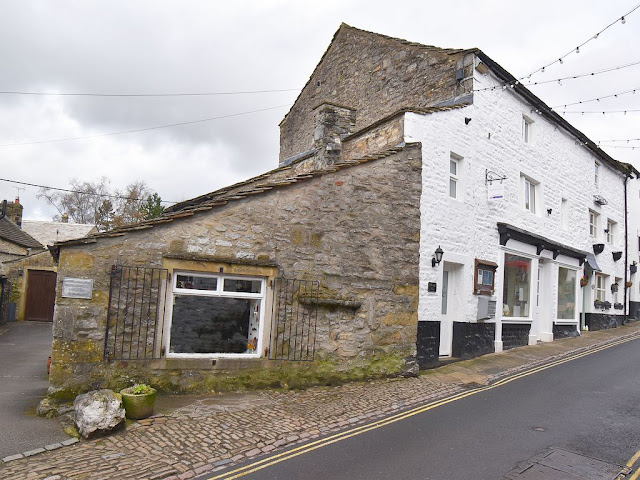
|
|
The old Blue Anchor Inn |
The murder took place at the entrance to Grass Wood (half mile west of the town), and Lee hid the doctor's body amongst the trees. But as searches were made for the missing man, Lee feared that the body would be discovered, and so he moved it several times. Eventually the body was dumped into the river Wharfe, but it was later found down stream at Burnsall. As Tom Lee was the last person to be seen with the doctor, he was already the main suspect for his disappearance, but without a body nothing could be proved. With the body recovered, Lee's accomplice turned kings evidence against him, and a warrant was issued for Lee's arrest. Lee is said to have hidden in a cave at Cove Scar to the west of the town, and after his hanging it became known as Tom Lee's Cave, and was said to be haunted by his ghost.

|
|
The approach to Grass Wood - scene of the murder |
Lee was taken to York to stand trial, where he was found guilty and hanged. His body was then brought back to Grassington, and hung in gibbet irons from a tree near the murder site in Grass Wood. His decomposing body is said to have hung on Gibbet Hill for several years, and that items of clothing, and even body parts were stolen from the corpse (perhaps for use in folk healing or 'the hand of Glory' type charms?). When darkness fell, Lee's ghost was said to haunt the wood, his tormented spirit wandering amongst the trees.

|
|
Gibbet Hill by the roadside where Tom Lee's body hung in chains |
The spirit of the murdered Dr Petty was also said to haunt the lane passing through Grass Wood, while the ghostly form of his white horse was also seen on occasions. The river Wharfe flows just to the south of Grass Wood, and a little down stream a large and deep rock pool below the Ghaistrills Strid is still grimly known as 'Doctor Petty's Bath', from the belief that his body floated there for a while as the river washed it down stream.
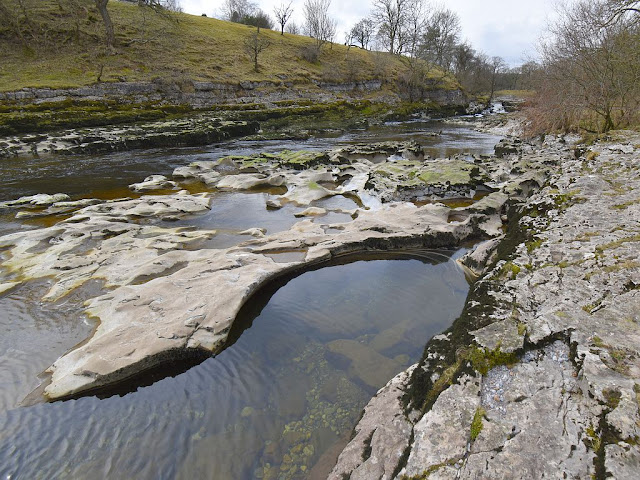
|
|
Doctor Petty's Bath |
The local author Bailey Harker mentions an outcrop in the river called Tom Crag, which might also have been connected with the murderer. Harker also noted that Lee's gibbet irons were eventually thrown into a deep part of the river at the Ghaistrills, and as a murderer cannot be buried in consecrated ground, it is possible that lee's bleached bones accompanied them. Either way this would only add to the reputation that the Ghaistrills was a haunted place.
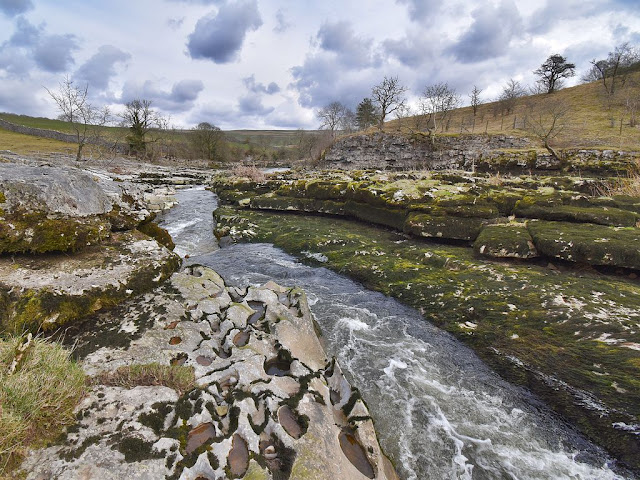
|
| The river Wharfe channelled through the Ghaistrills Strid |
It is perhaps ironic that the 'notorious' Tom Lee appears to be the only past resident of Grassington to have a plaque marking his home.
After notes
The Ghaistrills Strid, like the Strid at Bolton Abbey, is a place where
the river Wharfe is funnelled into a narrow channel cut through a rock outcrop
spanning the river. All the water flowing down the wide river bed above the
Strid is forced into the narrow (but deep) channel only a few metres wide,
creating a churning torrent of fast flowing water. The narrowness of the gap
gave rise to the Strid or stride name, as it was possible to stride or jump
across the gap in the past. This however was a very risky activity, as the
Strid at Bolton Abbey has claimed lives in the past, where people have fallen
in and been dragged down into the deep water filled chasm below.
Although there are no written records of the Ghaistrills having claimed
lives, locally it was said that several people had drowned there in the past.
This may have led to the belief that this part of the river was haunted, and a
place to be generally avoided (Robertson 1882). Thomas Whitaker, writing in
the early 1800's, mentions a couple who tried to jump cross the Strid, but
stumbled and fell in. On that occasion the turbulent waters swept the couple
rapidly along the narrow channel, and ejected them, rather than drawing them
down into its depths. Whitaker goes on to say.....
"This place is happily named the Gastrills; i.e. the Rills or Streams of
the Ghost; the plural form being possibly chosen by our ancestors, as the
river, when a little swelled, pours over the broad surface of the adjoining
rock in distinct and numerous rills. But the Saxon scholar may be inclined
to derive the latter syllable from thirlian, perforare; in which case the
word becomes 'Gast thrills', and must be understood to mean the narrow
aperture of the Ghost, a name which is certainly more exact, though less
poetical. Fear and fancy are nearly allied; but the most elegant
superstition could scarcely have imagined fitter scenery than that of the
Gastrills for an haunted stream." (Whitaker, 1812).
The information from these writers lends support to the old belief that
many rivers (including the Wharfe) demanded one or more lives every year.
These victims were seen as a kind of tithe taken by the river, and perhaps
this was a memory of a time when sacrifices were made to the spirit of a
river. At the Bolton Abbey Strid, this spirit seems to have taken the form of
a white horse which was said to appear before someone drowned in the river.
There may be an echo of this same water spirit in the ghostly white horse
(said to belong to doctor Petty) which was sometimes seen near Grass Wood
alongside the Wharfe at Grassington.

|
|
An old piece of river lore relates that ... "The Wharfe is clear and the Aire lithe; Where the Aire drowns one, the Wharfe drowns five." (Andrews, 1881). |
Bailey John Harker suggested that the Ghaistrills name referred to the spirits of those who had perished in the river. Harker also noted that the deep part of the river below the Strid was known as the Ghaistrills Parlour. Elsewhere in Yorkshire, the Parlour name, when used in an outdoor setting, refers to a supernatural dwelling place, for example the Fairy's Parlour at Almes Cliff Crags, and the Devil's Parlour at Roulston Scar.
Finally, there is a hint that Tom Lee's spirit simply took its natural
place, becoming linked with locations which already had supernatural
associations. His ghost haunted the cave at
Cove Scar - said to be a fairy dwelling place. His gibbet irons (and bones?) were taken to the Ghaistrills - a haunted
stretch of the river, above the suggestively named Ghaistrills Parlour, and
further down stream the isolated rock in the river called Tom Crag.

|
|
Eroded basins and bone-like rocks near the Ghaistrills Parlour |
Reference
Andrews, A. (1881) Old Yorkshire Vol 1.
Harker, B.J. (1890) The
Buxton of Yorkshire - Grassington.
Robertson, J. (1882) Tom Lee - A tale
of Wharfedale.
Rowley, R.G. (1982) Tom Lee - The Grassington Murderer.
Whitaker,
T.D. (1812) The History and Antiquities of the Deanery of Craven.


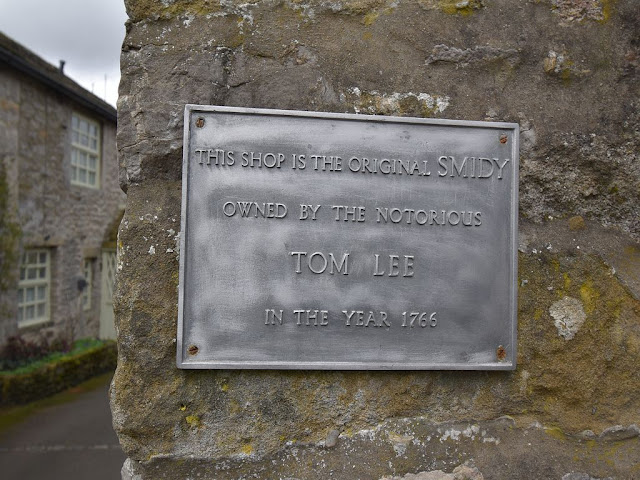
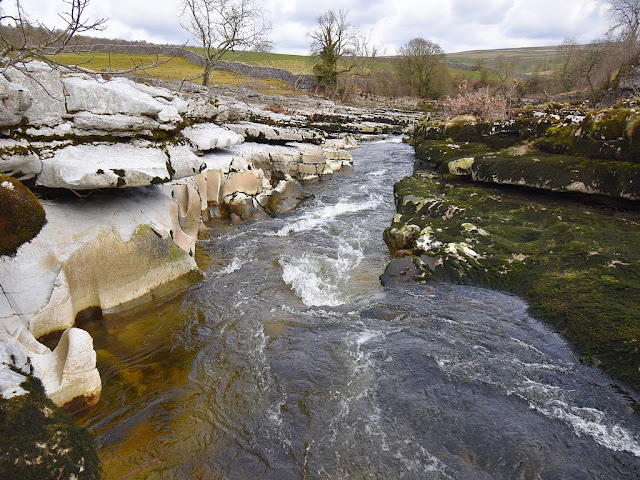
Post a Comment